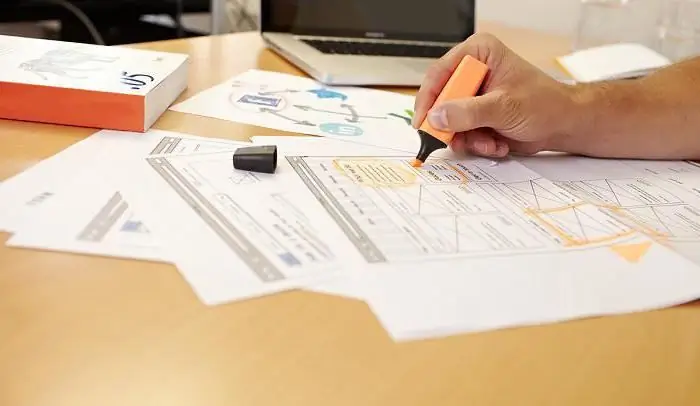Every day we read various texts - articles in newspapers and magazines, small notes, textbooks, manuals, books, documents. All this, after writing, is not immediately published or goes to print. Creation, editing - the stages of the appearance of the finished text. What is meant by the last term? What types of editing exist and what is their nature?
Editing concept
"Editing" comes from Latin. There is such a word as redactus in it. Its meaning is "put in order." In Russian, "editing" refers to multidimensional concepts. It has several meanings:
- Editing is primarily called the correction of the written text, the elimination of spelling, punctuation, stylistic errors. Also, this word means changing the design of the document (changing the font, indents and other technical parameters of the text, dividing into columns).
- There is another definition. Editing is a kind of professional activity. ATeditors work in the media to prepare for the publication of printed publications.

Types of editing and their definitions
Editing can be divided into 2 types. These are general, also called universal, and special. The first type of editing is understood as a complete system of the editor's work on the text. During the correction, the written is improved, spelling and punctuation errors, repetitions of words are eliminated.
Special editing is the work on the text from some special side, for the evaluation and analysis of which there is not enough general knowledge. This work can be done by editors who are deep specialists in a particular field of knowledge to which the corrected text or document belongs. Special editing has a classification. It is subdivided into:
- literary;
- scientific;
- artistic and technical.

Literary editing
Literary editing is a process in which the literary form of the text or work being checked is analyzed, evaluated and improved. The editor is doing the following work:
- corrects lexical errors;
- finishes text style to perfection;
- eliminates logical errors, improves the form of the text (breaks into paragraphs, chapters or combines fragments);
- reduces the text while maintaining the semantic content;
- checks the actual material (dates, names, quotes, statistical values).

Scientific editing
A huge number of books, articles are written on certain scientific topics (for example, on medical ones). Often the authors are not specialists. Reputable publishing houses use the services of scientific editors. These people check the text from the scientific side, eliminate any inaccuracies, remove irrelevant and false information.
It is worth noting that the names of scientific editors in books, journals are indicated on the title page in accordance with the requirements of publishing standards. The mark that a scientific editor was involved in the project serves as a guarantee of the high quality of the text, the veracity of the information presented.
Artistic and technical editing
Art editing in reputable publishing houses is performed by art editors. They are engaged in the design of the cover and the entire magazine, newspaper or book, the selection of images and color schemes. Thus, artistic editing is a process in which the design of the publication is developed, sketches, layouts, illustrations are created, analyzed and evaluated from an artistic and printing point of view.
There is also such a thing as technical editing. During it, the technical parameters of typing and its layout are corrected, if necessary, fonts, their sizes, indents, line spacing are changed, numbered and bulleted lists are added for easeperception of information.

Modern editing experience
Practically all modern people can no longer imagine their lives without computers. This technique is available in housing, and in educational institutions, and in various organizations and companies. With the help of computers, a variety of texts are created: articles, abstracts, diploma and scientific works, documents. A huge number of programs have been developed that have opened up wide possibilities for editing.
One of the famous computer programs is Microsoft Word. With it, you can not only type text, but also edit files, arrange them properly:
- remove spelling and grammatical errors (in the text they are underlined by default with red and green wavy lines);
- change the size of the margins, select the appropriate page settings (sheet format, portrait or landscape orientation);
- add various underlines, highlight text in the right places with different colors, quickly insert bullets and numbering;
- divide text into columns, insert tables, charts, graphs, images, add footnotes, hyperlinks.

Quite often in the process of work, users are faced with the need to edit PDF-files ("PDF"). This format is widespread and popular. Special programs have been created to edit such files. They allow users to delete unnecessary pages, highlight important points with brightcolor, move text and graphic blocks. Editing "pdf" with the help of programs is very easy, because their interface is intuitive. All necessary tools are displayed in the programs on the panels.
In conclusion, it is worth noting that editing is an important process of preparing texts. It can be carried out using various computer programs. They provide users with a wide range of options. With their help, plain text without formatting can be turned into a properly designed business report or into a bright advertisement that attracts a resume.

